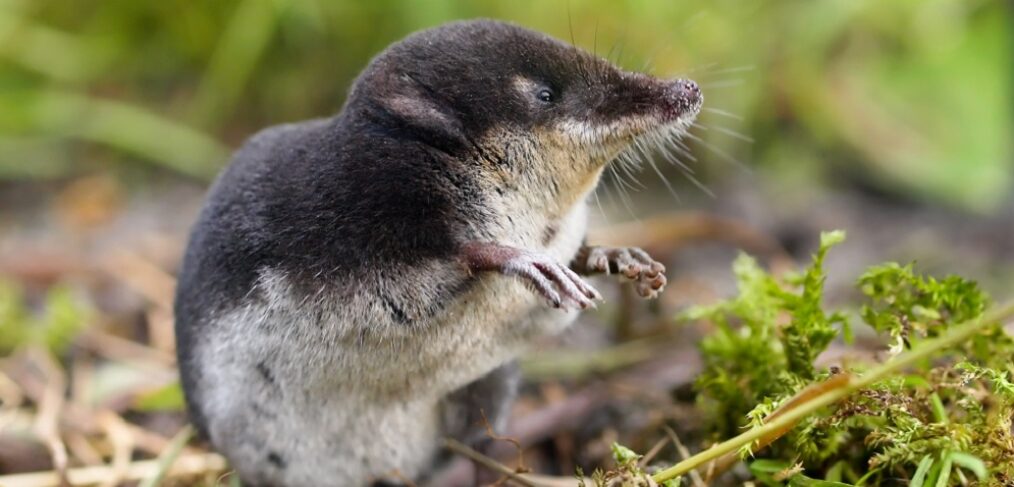
Species of the week #100 – Watershrew
Our 100th species of the week used to be a Palatinate-wide child terror. “Watch out, the water rat will bite your toes” was the warning given by concerned adults to almost every child who dangled their feet in village streams and ponds. Unfortunately, today children can hardly ever see a water shrew. This is because it has become very rare.
| Distribution status in Rhineland-Palatinate | endangered |
| Remaining occurance | Bavaria, Central Europe |
| Last sighting in Rhineland-Palatinate | 2017 near Haßloch |
| Habitat | Damp meadows an near-natural waters |
| Threat | River engineering, water pollution, insect mortality |
The water shrew and its even rarer relative, the marsh shrew, are native to Rhineland-Palatinate. But today they are on the Red List of endangered species. Because they are somewhat larger than field mice and house mice, they have been called “water rats”. Yet shrews are neither rats nor mice, but rather related to hedgehogs and moles as insectivores.
Water shrews prefer to live on the banks of bodies of water, are excellent swimmers and divers and are one of the very few mammal species that can produce poison. Water shrews produce a poisonous secretion with glands under their tongues in order to kill their prey, which is usually very wriggly, in the water and then eat it on land. However, it only becomes dangerous if you are only the size of a mouse yourself. For humans, the poison is harmless and the water shrews are not interested in children’s feet and toes.
To be able to dive for a long time, the water shrew uses a trick: Before diving, it rubs its fur against plants and charges it electrostatically. This creates a film of air between the skin and the fur, and the fur does not get soaked when diving. However, the air cushion increases their buoyancy, so they often have to hold on to plants and stones or row strongly with their hind legs to avoid being propelled upwards. They dive up to two metres deep, but the duration of a dive is 20 to 30 seconds at most.
Water shrews build their burrows underground in higher bank areas. They also use abandoned mouse holes and connect these burrows to the nearest body of water with tunnels they have dug themselves.
The water shrew is well adapted to life in water, but needs clear, little polluted waters. The endangerment of these habitats through watercourse construction and intensification of use is, in addition to poor water quality and a lack of food, a major problem. Because the water shrew is unable to hunt in culverted and canalised streams, it is best helped by the conservation and renaturation of such water bodies. Richly structured watercourses with high water quality offer a good food supply and are therefore the ideal habitat.
The water shrew’s sister species, the marsh shrew, prefers to live in marshy meadows and is even rarer. It is considered critically endangered and has not been detected in Rhineland-Palatinate for several years. Worldwide, their populations are clearly declining.
Politically necessary:
– Renaturation of water bodies
– Preserving and safeguarding near-natural water bodies
If you are interested in the previous 99th Species of the Week, you can find it here.
Photo: creativenature.nl / stock.adobe.com
